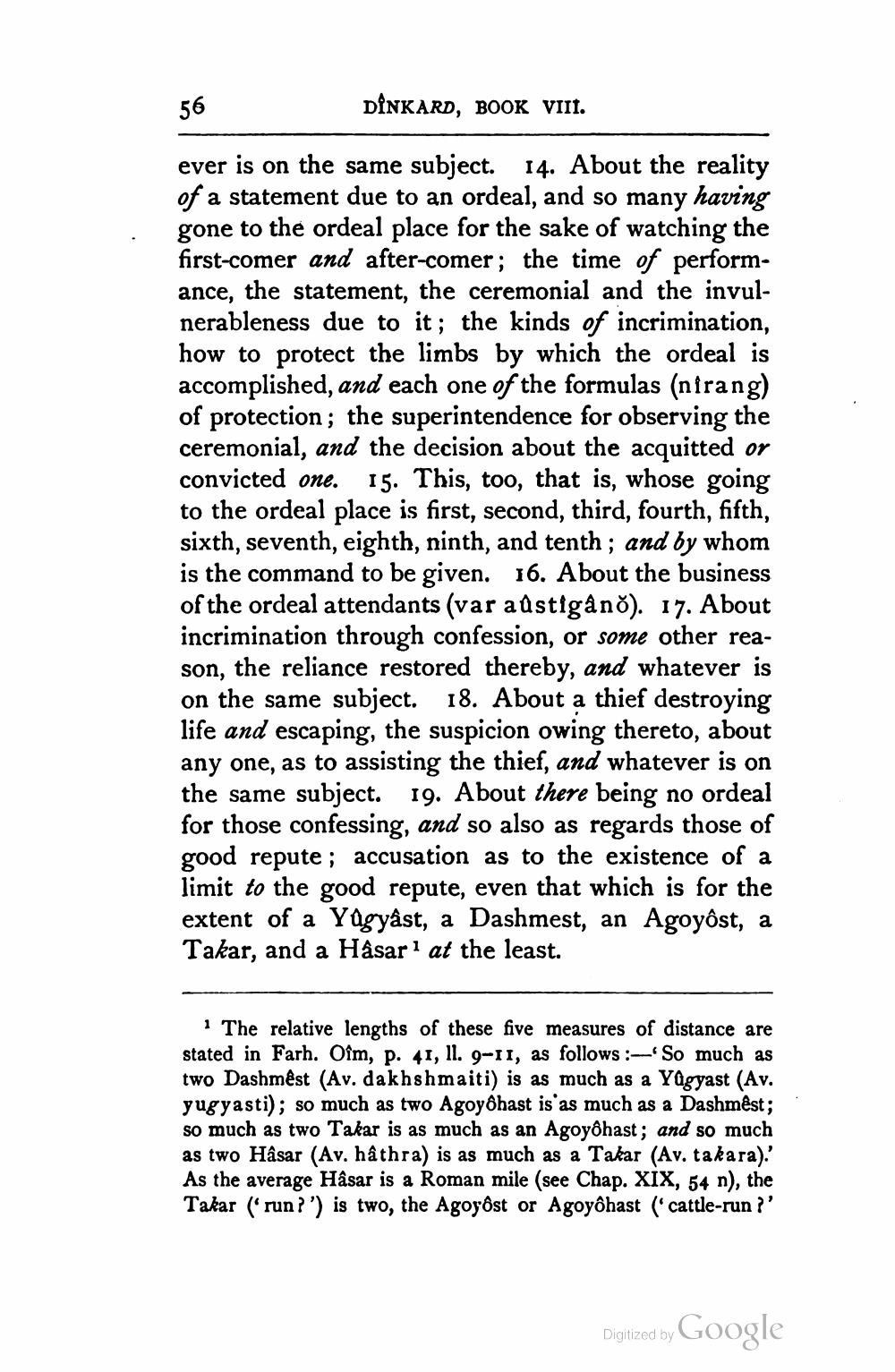________________
56
DINKARD, BOOK VIII.
ever is on the same subject. 14. About the reality of a statement due to an ordeal, and so many having gone to the ordeal place for the sake of watching the first-comer and after-comer; the time of performance, the statement, the ceremonial and the invulnerableness due to it; the kinds of incrimination, how to protect the limbs by which the ordeal is accomplished, and each one of the formulas (nirang) of protection; the superintendence for observing the ceremonial, and the decision about the acquitted or convicted one. 15. This, too, that is, whose going to the ordeal place is first, second, third, fourth, fifth, sixth, seventh, eighth, ninth, and tenth; and by whom is the command to be given. 16. About the business of the ordeal attendants (var aûstigânŏ). 17. About incrimination through confession, or some other reason, the reliance restored thereby, and whatever is on the same subject. 18. About a thief destroying life and escaping, the suspicion owing thereto, about any one, as to assisting the thief, and whatever is on the same subject. 19. About there being no ordeal for those confessing, and so also as regards those of good repute; accusation as to the existence of a limit to the good repute, even that which is for the extent of a Yugyâst, a Dashmest, an Agoyôst, a Takar, and a Hâsar1 at the least.
1 The relative lengths of these five measures of distance are stated in Farh. Oîm, p. 41, ll. 9-11, as follows:-'So much as two Dashmest (Av. dakhshmaiti) is as much as a Yagyast (Av. yugyasti); so much as two Agoyôhast is as much as a Dashmêst; so much as two Takar is as much as an Agoyôhast; and so much as two Hâsar (Av. hâthra) is as much as a Takar (Av. takara).' As the average Hâsar is a Roman mile (see Chap. XIX, 54 n), the Takar (run?') is two, the Agoyôst or Agoyôhast ('cattle-run ?'
Digitized by
Google




